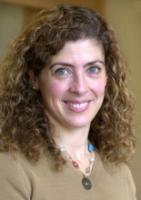
Dr. Maria E. Moreyra Garlock is an Associate Professor at Princeton University in the Department of Civil and Environmental Engineering, and also the Director of the Architecture and Engineering Program. Dr. Garlock is also a Professional Engineer, having earned her license while working for Leslie E. Robertson Associates of New York City as a structural engineer. She had the opportunity to participate in the design of many interesting buildings including several skyscrapers. Dr. Garlock received her Bachelors of Science degree from Lehigh University, a Masters of Science degree from Cornell University, and a Ph.D. degree from Lehigh University.
Dr. Garlock’s scholarship is in resilient structural design for large fires and earthquakes, both as isolated and as combined multi-hazard events. In addition, Dr. Garlock studies the best examples of structural designs of the present and past, which encompass the ideals of efficiency, economy, and elegance. She has co-authored a book on the subject (Felix Candela: Engineer, Builder, Structural Artist), and co-curated several exhibitions with scale models and instructional displays that teach about exemplary structural engineering designs. She is the recipient of awards such as the President’s Award for Distinguished Teaching (the highest teaching award at Princeton University), the Lawrence Keyes, Jr. /Emerson Electric Co. Faculty Advancement Award, and the Bronze Award for the Advancement of Arc Welded Design, Engineering and Fabrication.
The increasing complexity of building structures makes it sometimes difficult to apply a prescriptive approach for fire design and at the same time maintain efficiency, economy, and elegance. While there is a place for prescriptive design, there are other tools that better enable the design intent. This lecture begins with a historical examination of fires in major structures and the impact that these events had on fire design. Then, new opportunities for fire design through a performance-based approach are discussed. Such an approach requires knowledge of the fire characteristic, thermal loads imposed on the structure, and the structural response given the interaction and connectivity with the building as a whole. This presentation will therefore provide engineers with the most fundamental concepts needed for designing for fire using a performance-based approach. Finally, the benefits of such an approach are illustrated for steel structures through robustness, cost savings, reduced carbon footprint, and visual elegance.
Lindsay Walton
(858)822-3273
lwalton@ucsd.edu
